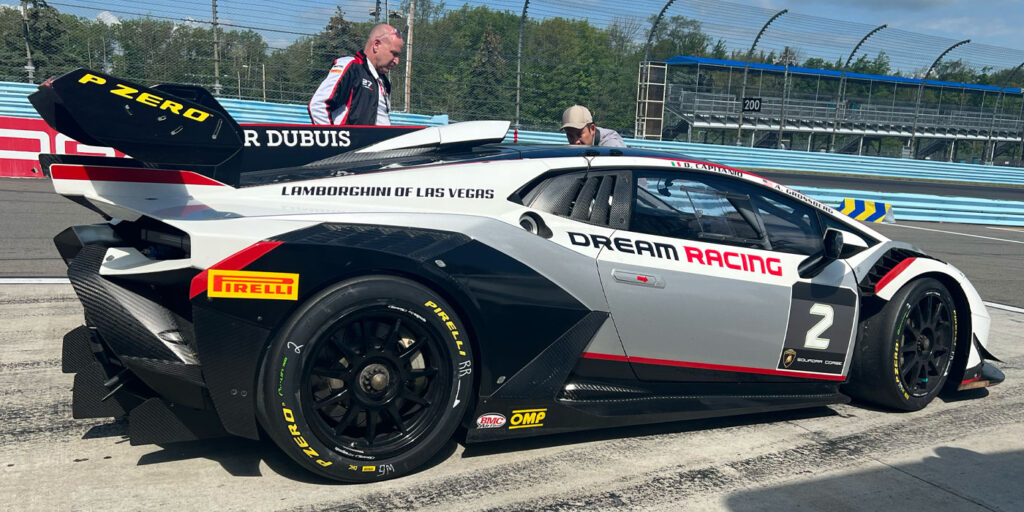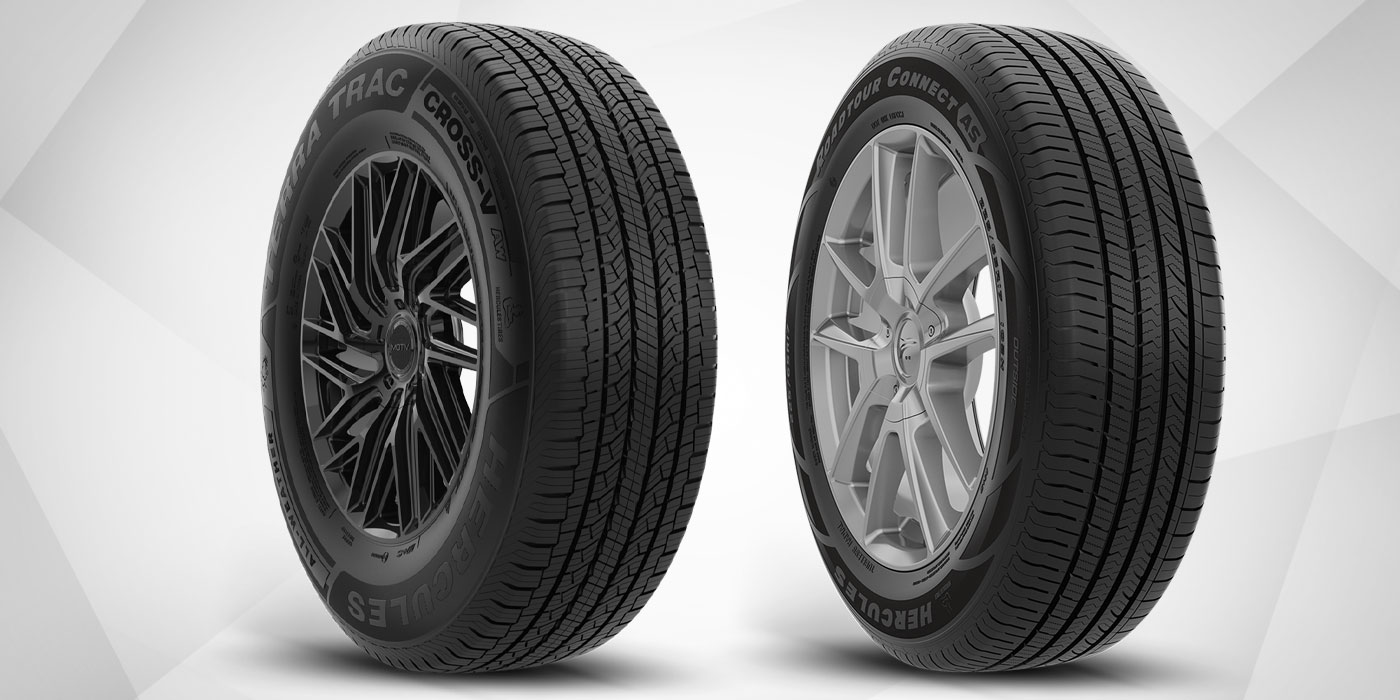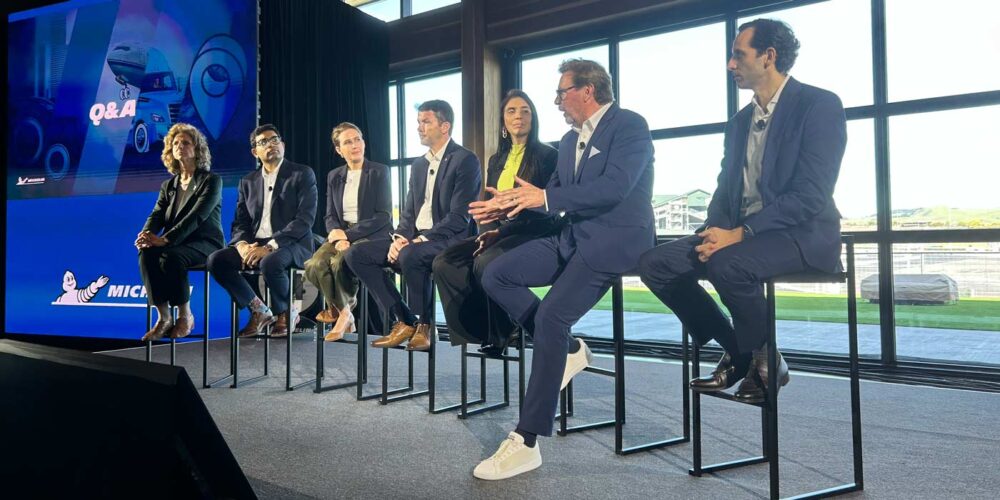During a hot, sunny day at Watkins Glen International raceway, Orazio Mastracchio runs his hand along the coarse surface of a used racing slick–tires that for months, Pirelli has worked to make specifically for the Lamborghini Super Trofeo race that weekend.
“After every race, we measure the tire. We scrape the [top layer of] rubber off the tire to see what it has picked up on the track, and we look at the wear pattern,” says Mastracchio, Pirelli’s director of motorsports for North America. “We look at the integrity of the tire… it gets inspected and analyzed to see how we can improve the product, and whatever we find at the track gets translated to the street.”
For decades, Pirelli has made tires for racing. Yet its relationship with Lamborghini exemplifies what the Italian tiremaker strives to bring to market: premium performance products for high-performing vehicles. And it doesn’t stop at the OE level. Pirelli’s relationship with Lamborghini started with Ferruccio Lamborghini turning to the tiremaker to supply tires for his first car– the 350 GTV–in 1963. But the long-standing relationship between these two Italian companies now extends to racing and replacement in a continuous cycle of improvement that characterizes “race to road” tire development, as the tiremaker says.
To demonstrate this “race to road” journey, Pirelli invited members of the trade media on a ride-and-drive to showcase Pirelli’s commitment to race tire experimentation and innovation and how it translates to faster developments in its road tires and an array of OE fitments for high-performance vehicles that all converts to notoriety in the replacement segment.
MORE: Pirelli Talks EV Tires for Aftermarket, Investment in North America
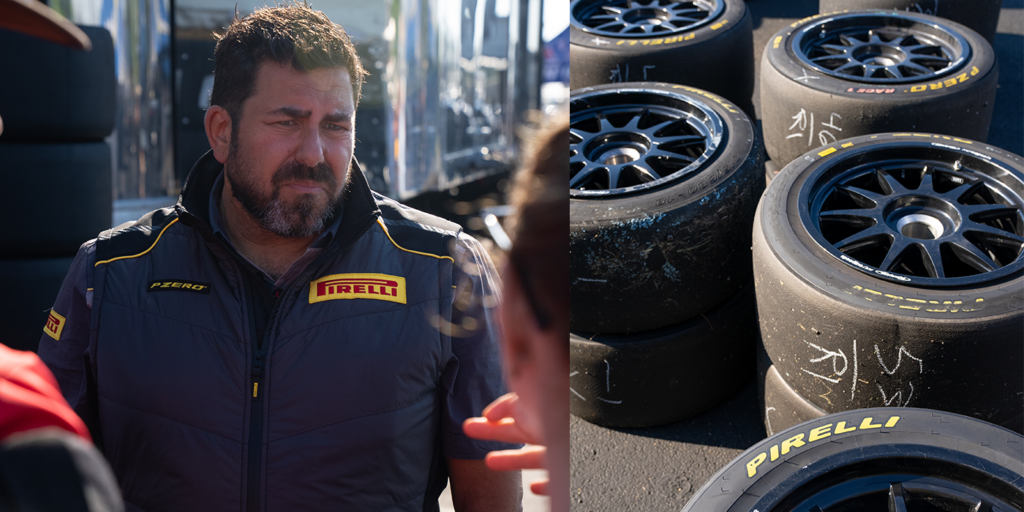
The ‘Perfect Fit’
Our journey from “race to road” started at the Lamborghini Lounge, a no-frills building tucked inside New York City’s Chelsea District. Inside, it’s where discerning soon-to-be Lamborghini owners can go and customize their vehicles (namely, the Huracán and Aventador) as part of the carmaker’s “Ad Personam” customization program. They can even choose what color of thread will be used to sew the seats together.
This customization draws parallels to how the tiremaker works with Lamborghini on the OE side, as it uses its “perfect fit” strategy to create tires that specifically fit the performance of Lamborghini’s supercars.
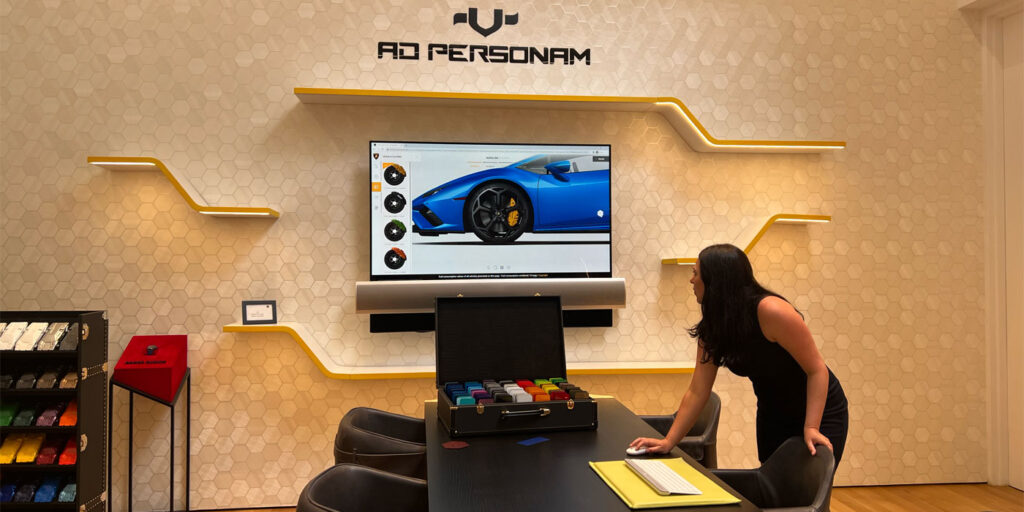
“The ‘perfect fit’ is exactly the strategy of bringing the right product to the customer–exactly the product that is needed for him and his car,” says Claudio Zanardo, CEO of Pirelli Tire North America. “Today, the technology on cars is much more complex, and we need to have a product that is exactly designed for the specific car. It’s a challenge and a nice exercise to work together with the OEMs to develop new technologies and never stop improving our product. Our goal is to bring maximum performance to our customers.”
“No one vehicle platform is the same,” continues Ian Coke, Pirelli North America’s chief technical officer. “So when we say the “perfect fit,” we really mean that this tire is tailored for that vehicle, for that performance, for those attributes, for that time.”
Members of the trade media and I experienced Pirelli’s ‘perfect fit’ strategy in action as we drove the Lamborghini Urus, the company’s first high-performance SUV, from the busy streets of New York City to the Finger Lakes region of New York state, where we’d see how Pirelli and Lamborghini test out their most advanced innovations on the extremes of the racetrack.
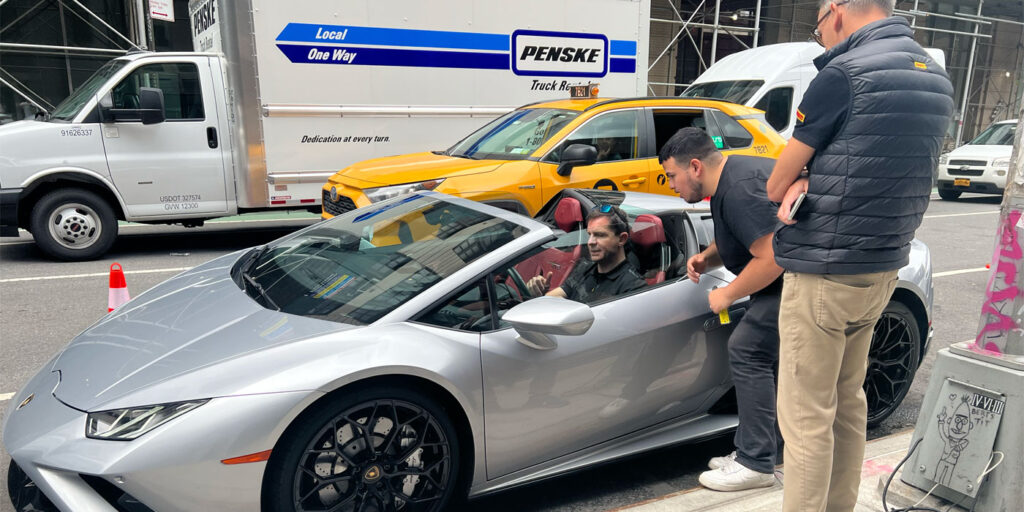
Developing Tires for the Track
On a Friday morning in late June, we rolled up to Watkins Glen in our Lamborghini Urus with the whizzing sound of race cars in the distance. When we arrived at Pirelli’s Tire Fitment Area, the hydraulics of tire changers greeted us, as skilled technicians installed tires on wheel assemblies for qualifying rounds of the Lamborghini Super Trofeo race.
Despite taking place in North America for just 10 years (young in the world of motorsports), the Super Trofeo is a single-make championship filled exclusively with Huracán Super Trofeo Evo vehicles that drive only on Pirelli tires. The championship is run separately on three continents: North America, Europe and Asia. For the race weekend at Watkins Glen alone, Pirelli produces upwards of 1,000 tires: about 800 dry slicks and 200-300 rain tires. But, this is just a sliver of the motorsports work Pirelli does if you look at the global footprint of the Super Trofeo and other races where its tires are used (hint: think Formula 1).
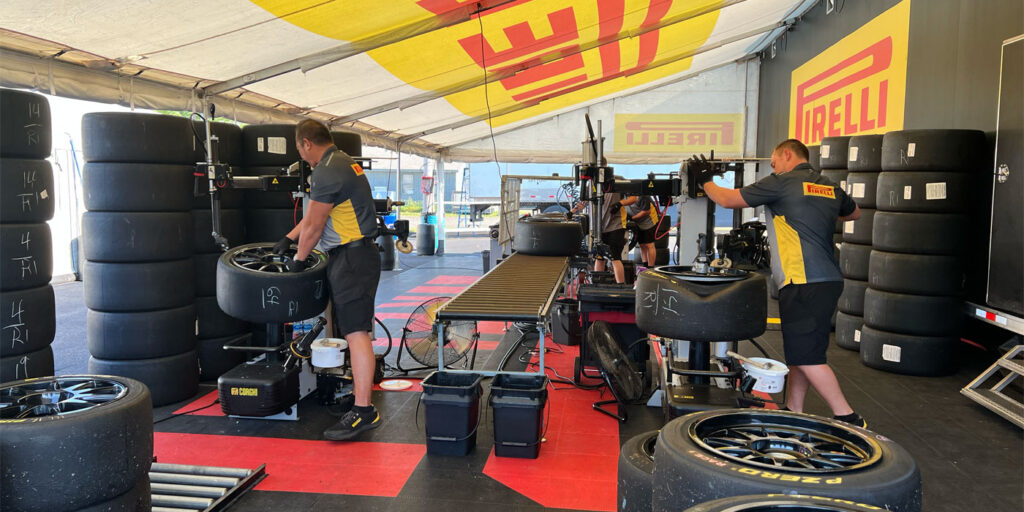
So what’s the first step in developing tires for an event like this? Although not super exciting, it’s gathering data. For the Super Trofeo, Lamborghini sends its vehicle specs for the race to Pirelli. The tiremaker also takes a piece of the track, in this case at Watkins Glen, and inputs the details of its surface and abrasions into its simulation software. From there, Pirelli can change any aspect of the tire to make sure its products hold up to what racing teams expect all before any rubber comes into play.
“The software simulates the behavior of the tire, so we can, for example, change the compound, and see how the tire reacts, or change belt sizes, and see how the tire reacts to the data from the track and the vehicle,” says Mastracchio, Pirelli’s motorsports director.
The two main aspects Pirelli designs for are first, safety, and second, performance. “In the Super Trofeo, for example, we’re working with a 600-horsepower engine, so the tire needs to be able to support the load and speed. Then, you have the arrow of the wings, the arrow of the load… there are a lot of factors we take into consideration.,” Mastracchio says.
Once engineers nail down the tire’s performance characteristics, a prototype is made and outdoor testing begins.
Getting Ready for Race Day
Months before race day, Pirelli starts manufacturing tires for that specific race. However, current supply chain challenges aren’t lost on even the most prestigious races. Chris Ward, Lamborghini’s head of motorsports, told us that the logistics of transporting vehicles and tires is never easy.
“You have the challenge of getting inventory across roads, sometimes into the country, and all this happens with the shortages and costs we’re facing nowadays,” he says. “Also, every race track is different. Here, our teams are situated a half-mile away, for example. It’s a huge undertaking and we’re grateful Pirelli is here to support us.”
On race day, tires are scanned, mounted on a team’s wheels and distributed. Then, it’s off to the qualifying round and the races. Yet the end of the race is when improvements start for Pirelli.
“Wherever data or tire analysis we collect here gets shared with R&D,” Mastracchio says.
Those like Coke, Pirelli’s head of R&D in North America, are particularly interested in how lessons from the track can translate across Pirelli’s product lines and into OE and replacement tire development.
“When you’re racing, you’re really pushing the tire to the limit,” says Coke, a 36-year Pirelli veteran who has ushered in many of the company’s innovations in tire technology in his career. “You’re pushing the materials and you’re pushing the envelope all the time.”
Coke says data gathered from the track goes back into the virtual tire modeling for street tires – the same simulation software that’s used to make race tires.
“This [Pirelli’s involvement in racing] has pushed our technology forward and we’ve been able to develop our replacement tires with that kind of push. Obviously, [the materials we use] are not the same – I think people would be really disappointed if they ran out of tread after 100 miles,” he jokes. “But the kind of construction that we put into the carcasses, the textiles…we gather valuable data from there (racing), and we’re able to then transpose that, whether it be bead design, sidewall design, etc.”
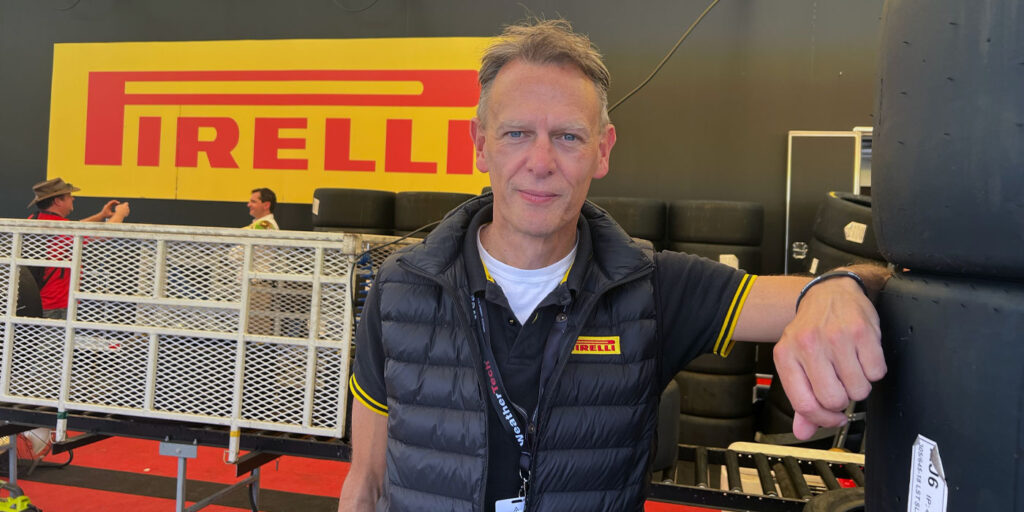
A Continuous Process
The technological journey from race to road is a continuous process, and for Pirelli, working closely with Lamborghini allows them to understand cutting-edge performance innovations of some of the world’s fastest supercars.
Just ask Maurizio Reggiani, vice president of motorsports for Lamborghini, who at a lunch break during the Super Trofeo race at Watkins Glen, reflected on how the specs the company gives Pirelli have changed over the years. He and Coke reflected on an instance pre-pandemic when the prestige carmaker requested a 23-in. OE fitment for tires on the Lamborghini Urus, the vehicle we drove to the track. There are often trade-offs, but as Pirelli continues to develop its technology alongside Lamborghini, the tiremaker feels it’s ready for whatever the replacement market needs.
“Through racing and our OE [business], We understand that vehicle so much, so we can design the replacement tires to actually fit it,” Coke explains. “So, if the customer doesn’t want to put the same OE tire on, we still have a good understanding of that vehicle platform. For replacement, we know exactly what we need to put into that tire. Maybe give it a bit more mileage, maybe give it something else, depending on the customer requirement. Working together [with OEMs], you really get the background of what the vehicle is all about and an understanding of what the OEM wants to deliver to its customer as well. So every single one has its own message it wants to give, and we fit in with that as well.”

